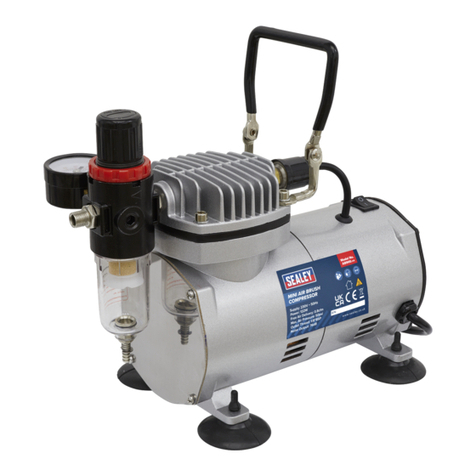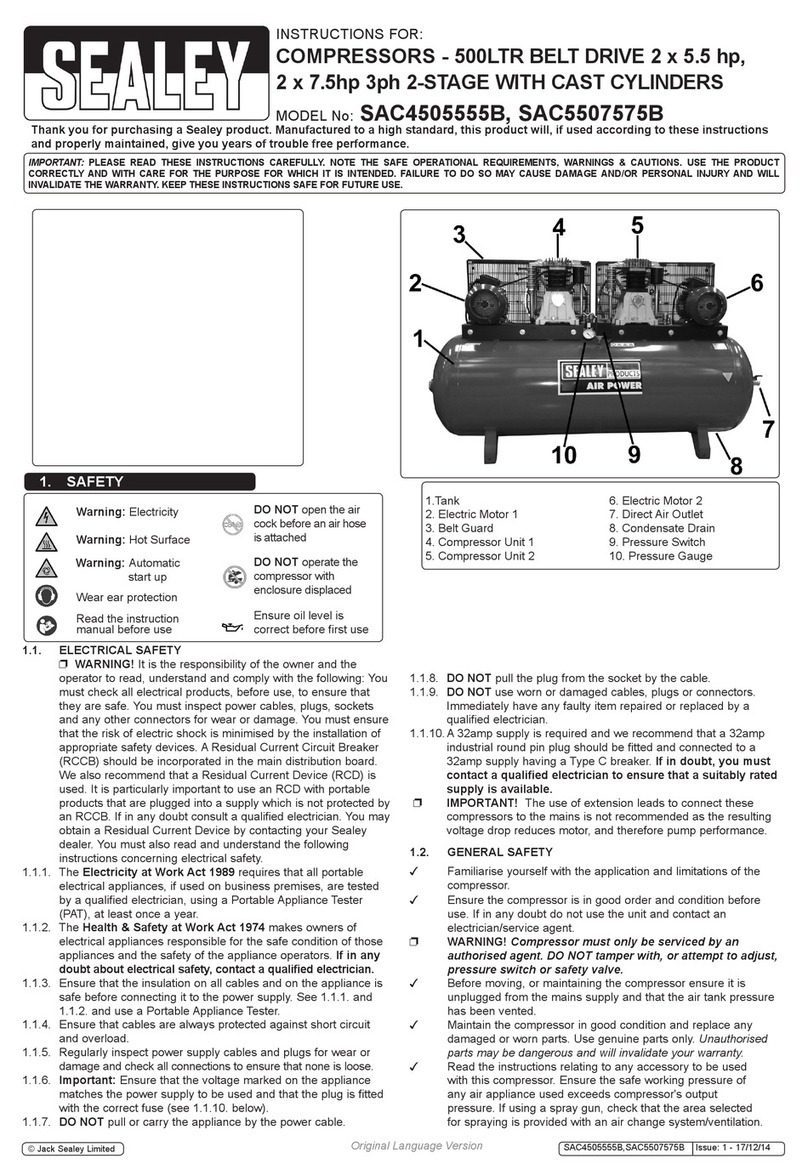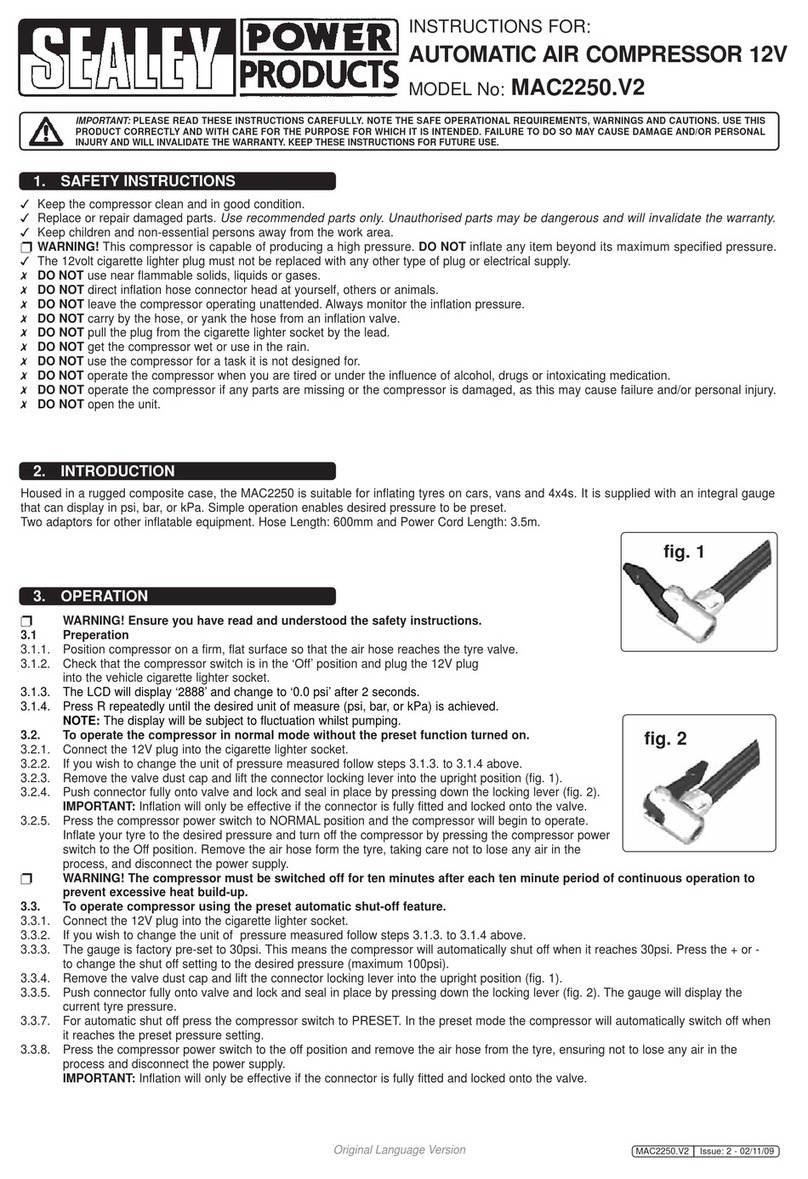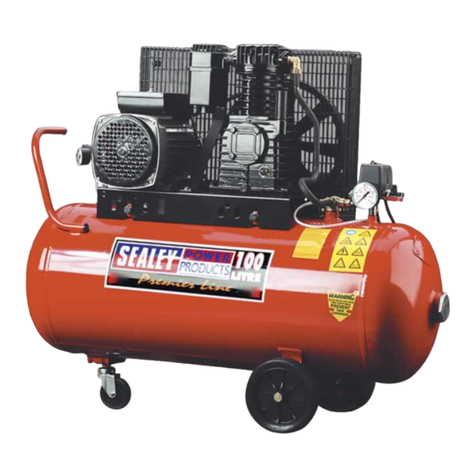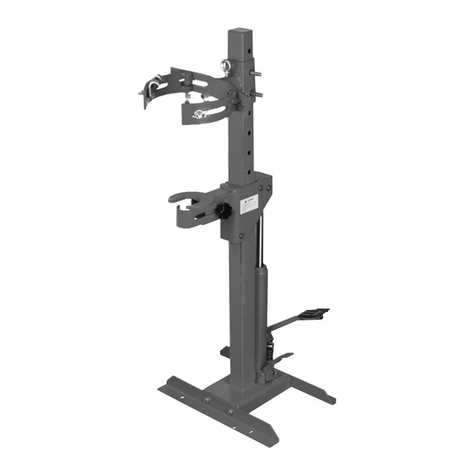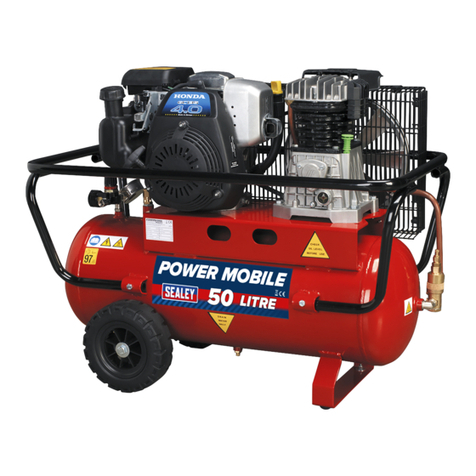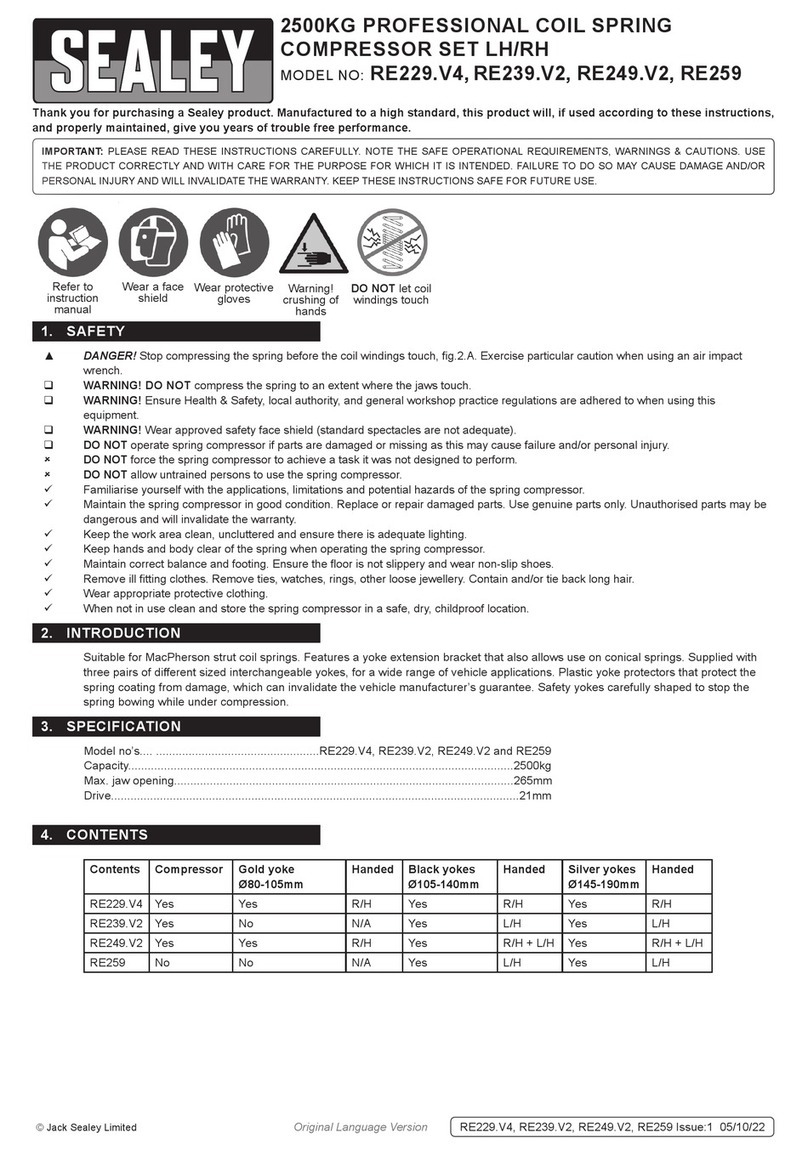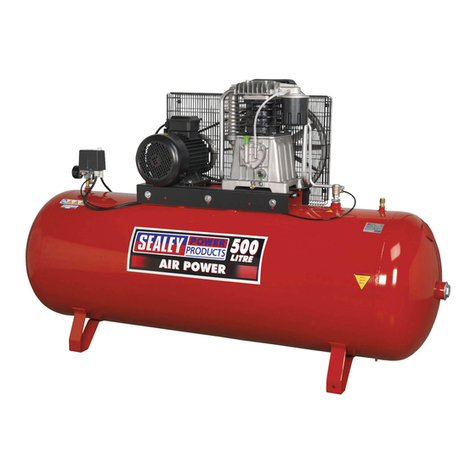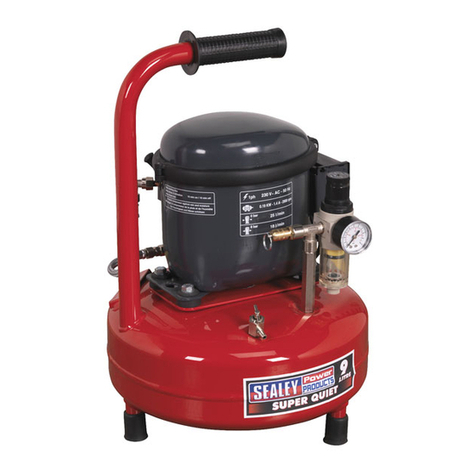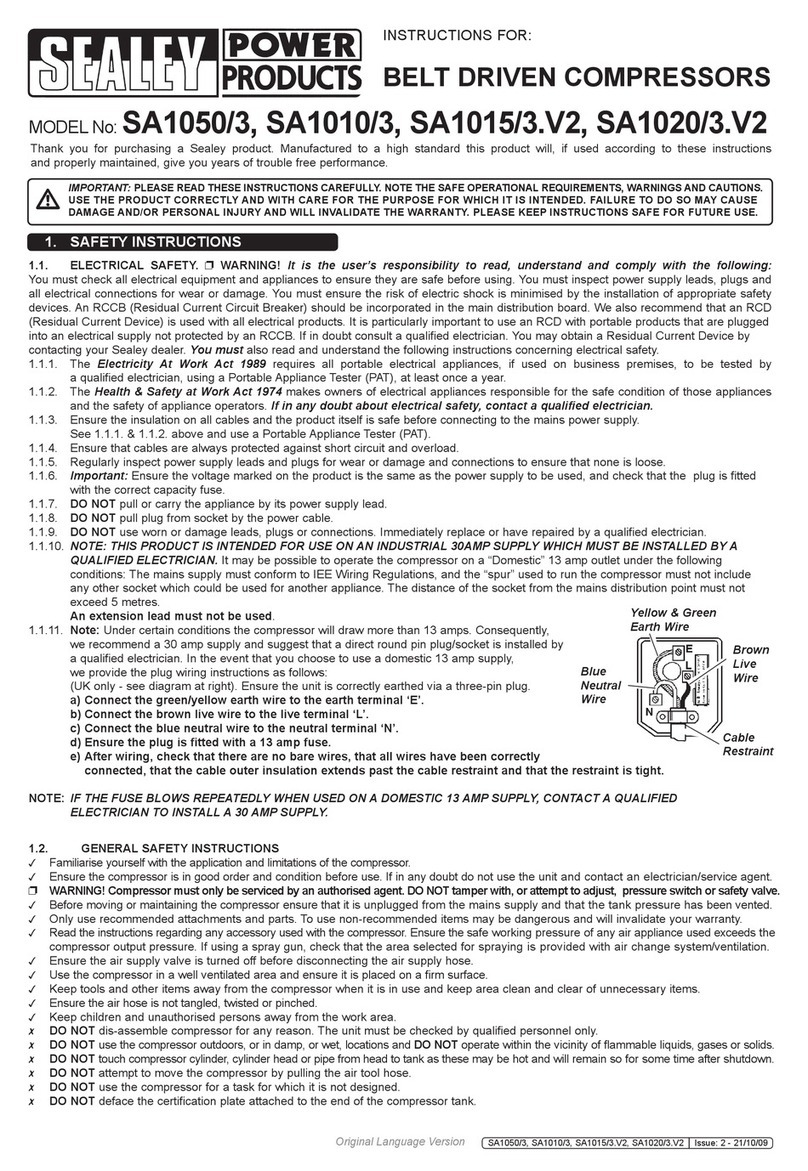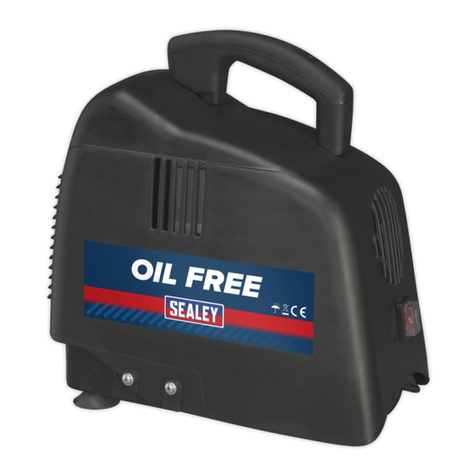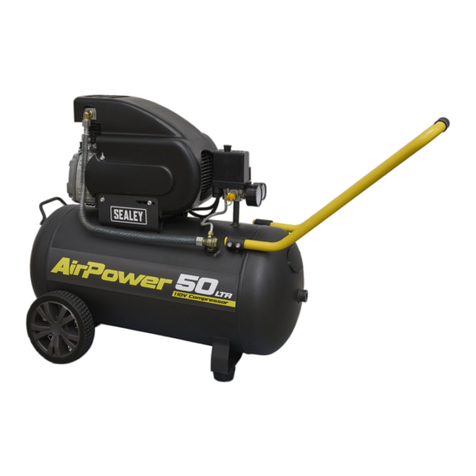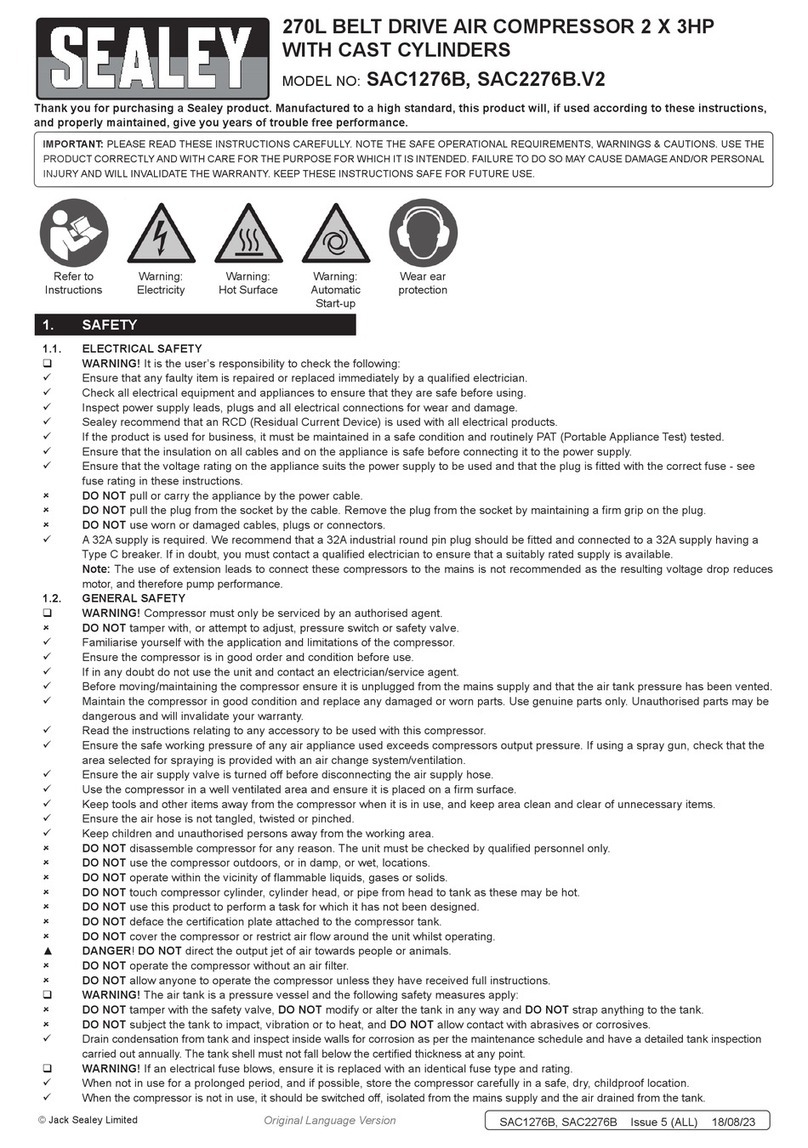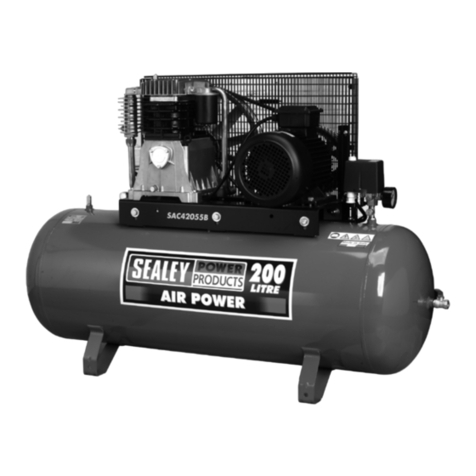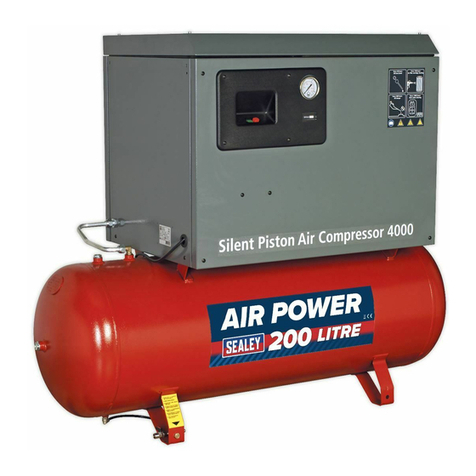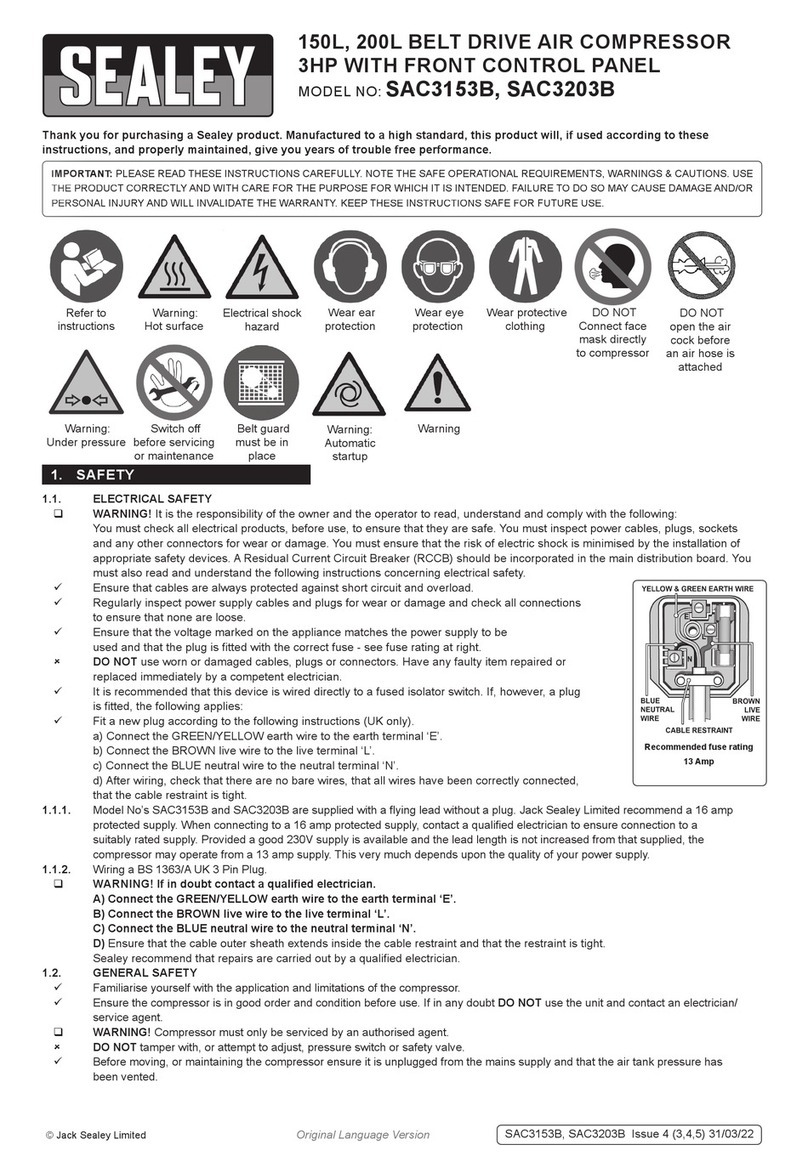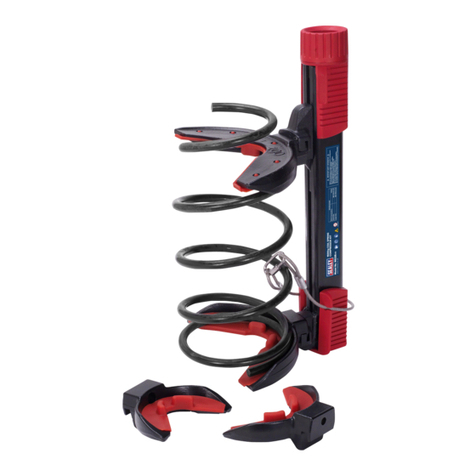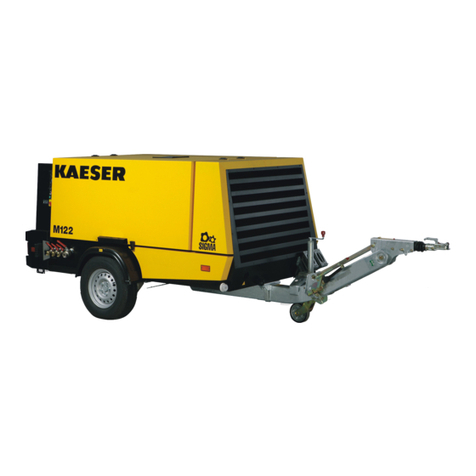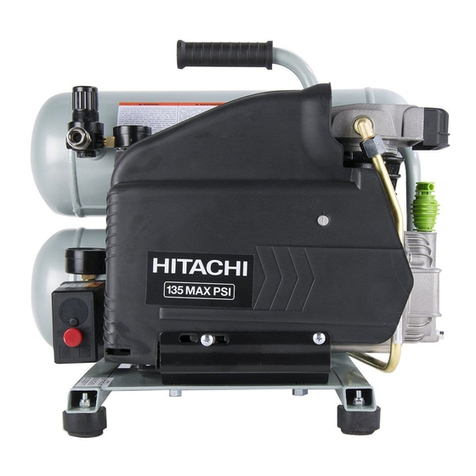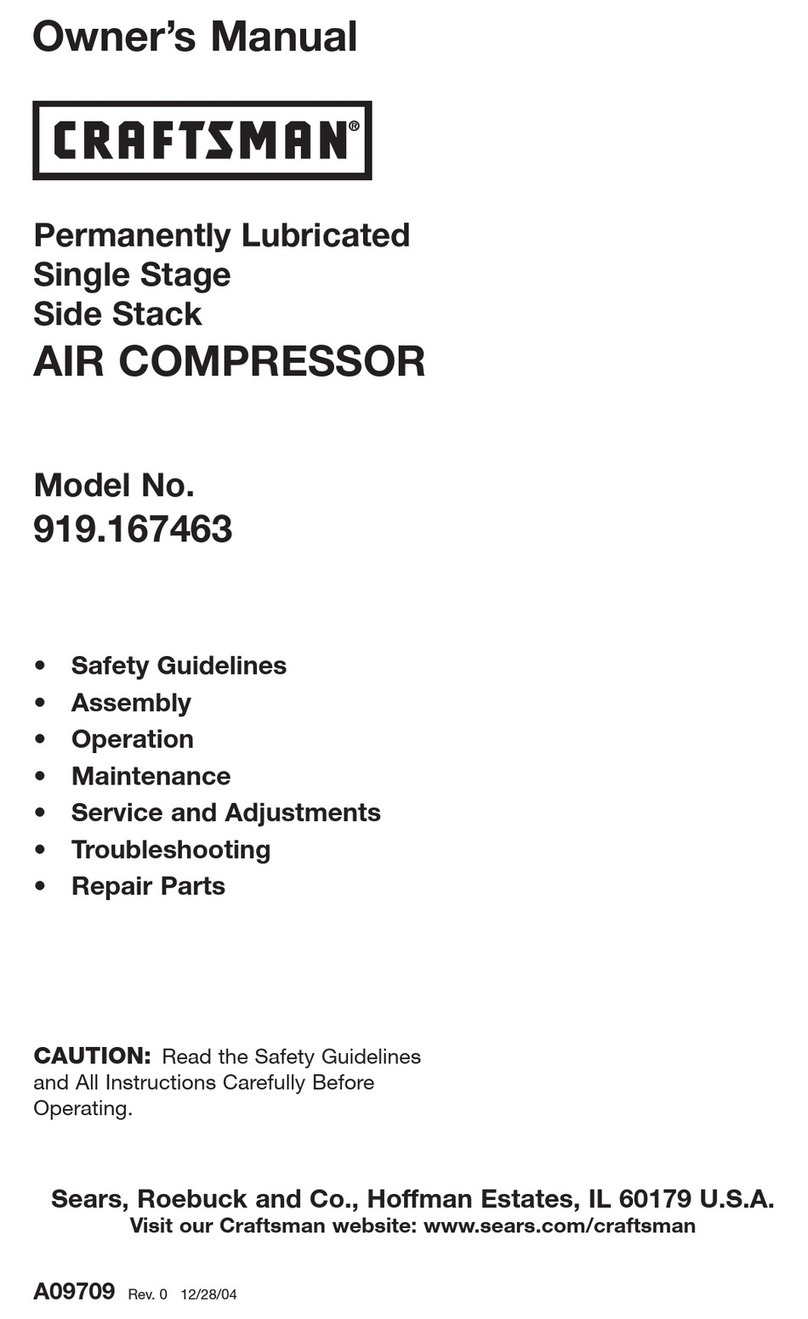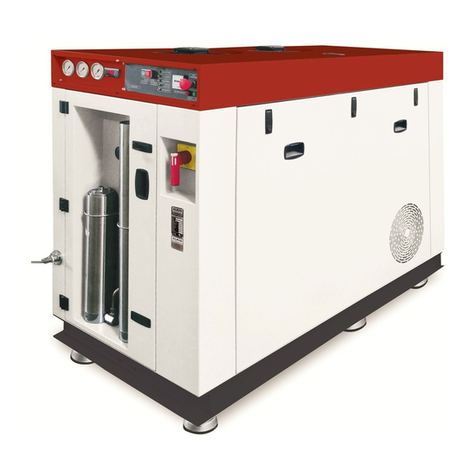
IMPORTANT! The use of extension leads to connect this
compressor to the mains is not recommended as the
resulting voltage drop reduces motor and therefore pump
performance.
1.2. GENERAL SAFETY
3 Familiarise yourself with the application and limitations of the
compressor.
3 Ensure the compressor is in good order and condition before
use. If in any doubt do not use the unit and contact an
electrician/service agent.
WARNING! Compressor must only be serviced by an
authorised agent. DO NOT tamper with, or attempt to
adjust, pressure switch or safety valve.
3 Before moving, or maintaining the compressor ensure it is
unplugged from the mains supply and that the air tank
pressure has been vented.
3 Maintain the compressor in good condition and replace any
damaged or worn parts. Use genuine parts only. Unauthorised
parts may be dangerous and will invalidate your warranty.
3 Read the instructions relating to any accessory to be used
with this compressor. Ensure the safe working pressure of any
air appliance used exceeds compressors output pressure. If
using a spray gun, check that the area selected for spraying is
provided with an air change system/ventilation.
3 Ensure the air supply valve is turned off before disconnecting
the air supply hose.
3 To move the compressor use the handle only. Bear in mind
that the compressor has a high centre of gravity. DO NOT
attempt to lift or move the compressor by any other means.
3 Use the compressor in a well ventilated area and ensure it is
placed on a firm surface.
3 Keep tools and other items away from the compressor when
it is in use, and keep area clean and clear of unnecessary
items.
3 Ensure the air hose is not tangled, twisted or pinched.
3 Keep children and unauthorised persons away from the
working area.
7 DO NOT dis-assemble compressor for any reason. The unit
must be checked by qualified personnel only.
7 DO NOT use the compressor outdoors, or in damp, or wet,
locations.
7DO NOT operate within the vicinity of flammable liquids,
gases or solids.
7 DO NOT touch compressor cylinder, cylinder head or pipe
from head to tank as these may be hot and will remain so for
some time after shutdown.
7 DO NOT use this product to perform a task for which it has
not been designed.
7 DO NOT deface the certification plate attached to the
compressor tank.
7 DO NOT cover the compressor or restrict air flow around the
unit whilst operating.
q DANGER! DO NOT direct the output jet of air towards
people or animals.
7DO NOT operate the compressor without an air filter.
7DO NOT allow anyone to operate the compressor unless
they have received full instructions.
WARNING! The air tank is a pressure vessel and the
following safety measures apply:
7DO NOT tamper with the safety valve, DO NOT modify or
alter the tank in any way and DO NOT strap anything to the
tank.
7DO NOT subject the tank to impact, vibration or to heat and
DO NOT allow contact with abrasives or corrosives.
3Drain condensation from tank daily and inspect both inside
and outside walls for corrosion as stated in the maintenance
schedule in section 5. The tank shell must not fall below the
certified thickness at any point.
WARNING! If an electrical fuse blows, ensure it is replaced
with an identical fuse type and rating.
3When not in use, store the compressor carefully in a safe,
dry, childproof location.
3 When the compressor is not in use, it should be switched
off, disconnected from the mains supply and the air drained
from the tank.
Original Language Version SAC1903B Issue: 2 - 21/02/12
2. INTRODUCTION & SPECIFICATIONS
Suitable for the professional workshop, this compressor is fitted with
a genuine 3hp motor. Twin capacitors and a centrifugal switch aid
trouble free start on a 13Amp supply. Pump features a heavy duty
full cast cylinder capped by an alloy head for improved heat
dissipation and long life. Heavy-duty drive guard protects belt and
flywheel that is designed to force air over the pump to aid cooling.
Supplied with full CE certification, test certificates and operation /
maintenance manual.
2.1. SPECIFICATION
Model:...............................................................................SAC1903B
Motor Output (HP):............................................................................3
Voltage/Phase: ...........................................................................230/1
Input current: .................................................................................13A
Speed (rpm): ...............................................................................1636
Air Displacement (cfm/Lm):...................................................13.4/380
Max Free Air Delivery (cfm/Lm):..............................................9.2/275
Max Pressure (psi/bar):............................................................145/10
Tank Capacity (L): ...........................................................................90
Dimensions (WxDxH) (mm):.........................................525x495x1130
Weight (kg): .....................................................................................65
Noise (dB.A): ...................................................................................74
Noise LwA (dB.A): ...........................................................................96
3. PREPARATION
3.1. Remove compressor from packaging and inspect for any
shortages or damage. If anything is found to be missing or
damaged contact your supplier.
3.2. Save the packing material for future transportation of the
compressor. We recommend that you store the packing in a
safe location, at least for the period of the guarantee. Then, if
necessary, it will be easier to send the compressor to the
service centre.
3.3. Confirm that the mains voltage corresponds with the voltage
shown on the compressor data plate.
3.4. As this compressor has a higher centre of gravity
compared to horizontally orientated models it should only
be used on a sound and level surface. Take great
care when moving the compressor and do not leave it on an
incline during transit. Site in a well ventilated area, protected
against atmospheric pollution and not in a place subject to
explosion hazard. Check if the compressor moves whilst in
operation – if it does, secure the wheels with two wedges. If
the surface is in a raised position, make sure it cannot fall,
securing it in a suitable way.
3.5. To ensure good ventilation and efcient cooling, the
compressor’s belt guard must be at least 100cm from any
wall.
3.6. Take care to transport the compressor correctly, DO NOT over
turn it or lift it with hooks or ropes.
3.7. Remove the plastic transit plug from the oil filler hole (fig.2)
and replace it with the filler/breather plug. It is a push fit,
ensure that it is pushed fully home.
3.8. Before using the compressor, check the oil level by observing
the sight glass as shown in fig.3. If the oil is not up to the max
mark it should be topped up with synthetic oil suitable for
temperatures ranging from -5°C to 45°C (viscosity 5W50).
fig.2
